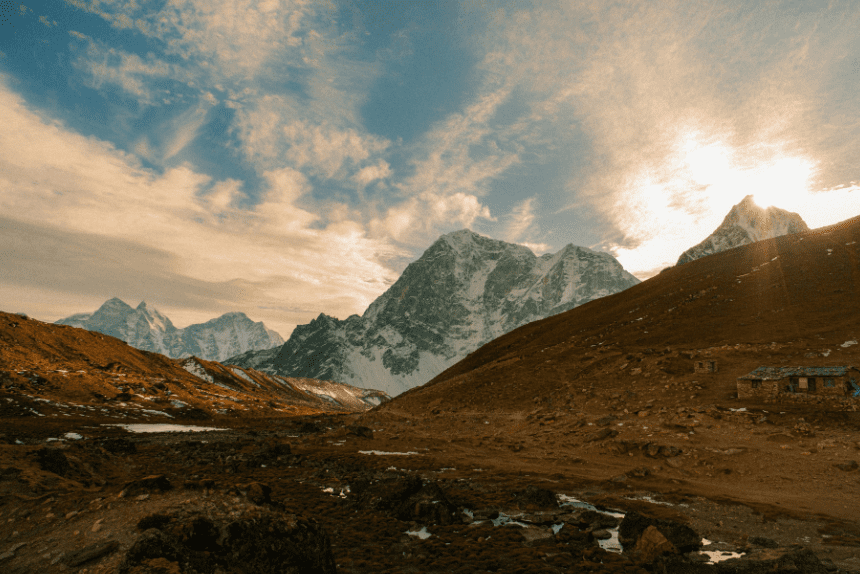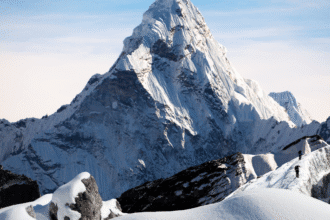Nepal has made a daring step to boost tourism in its less-explored areas by saying that 97 of its Himalayan peaks will be free to climb for the next two years. This project is part of the country’s efforts to offer more types of mountaineering, which will bring tourists to places other than the well-known Everest route.
The administration expects that this plan would offer a cheaper and less popular option as demand for Everest climbing permits rises and prices are slated to jump to $15,000 in September. The free climbs are part of a larger plan to boost tourism in the Karnali and Sudurpaschim provinces, which are two of the country’s most remote and economically poor places.
Why is Nepal letting people climb 97 peaks for free?
Nepal is waiving climbing fees for these 97 peaks to bring more tourists to the country’s remote areas, which have been ignored in favor of the more famous Everest for a long time. The peaks, which are in the far western Karnali and Sudurpaschim provinces, are between 5,970 and 7,132 meters high. Climbers haven’t been very interested in these regions because they are hard to get to and don’t have many facilities, even if they are very beautiful.
The idea is part of a larger plan to strengthen the economy in the area by encouraging mountaineering and tourism. The Nepalese government thinks that the free climbs could help create jobs and money for communities that visitors usually don’t visit. Here is the link to our article on Suspends Western Tourism.
What will this mean for Nepal’s climbing industry?
Mount Everest is one of the ten tallest peaks in the world, and it is located in Nepal. Climbing permits bring in millions of dollars each year, making mountaineering a major source of income for the government. Over 400 permits were given out for Everest in 2024 alone. This was a big part of the $5.9 million that climbing fees brought in the previous year.
Nepal wants to attract more tourists by allowing free climbs on these lesser-known summits. This would help ease the pressure on Everest and promote locations that haven’t yet reached their full tourism potential.
What problems can Nepal run into with this plan?
The free climbs should bring in more tourists, but there are still problems. It’s hard to get to the Karnali and Sudurpaschim regions right now, and people are worried that the area won’t be able to take a lot of climbers. The government is hopeful that the new program will help boost local economies, but there are still questions about how infrastructure will be built and if local communities will be able to handle the extra tourists.
The country’s tourist administration also needs to make sure that safety and environmental criteria are met as more and more people visit these locations. For this project to work, the government will need to prepare and work with local communities. Here is the link to our article on Tackling Overtourism Issues.
How would this plan change the fees for climbing Mount Everest?
Nepal has raised the prices for climbing Everest during peak season by a lot as part of its ongoing effort to deal with the rising crowds. The price to climb Everest will go up to $15,000 starting in September. This is the first price hike in almost ten years. But if you want to climb outside of the peak season, the pricing will be reduced. For example, permits will cost $7,500 from September to November and $3,750 from December to February.
The government’s decision to raise the cost of climbing Mount Everest is meant to cut down on the number of people who climb it and encourage people to choose less populated summits, like the ones that are now free to climb.
Final Thoughts: Will free climbs help Nepal’s tourism grow?
The Nepalese government’s choice to offer free climbs to 97 of its lesser-known peaks could help make the country’s mountaineering tourism more varied. The program could help the economy flourish in rural locations, but it will only work if the infrastructure improves and the local inhabitants can handle the extra guests. In the end, the free climbs project is a great chance for both climbers and local businesses. It might also help Nepal become known as one of the best places in the world to go mountaineering.








